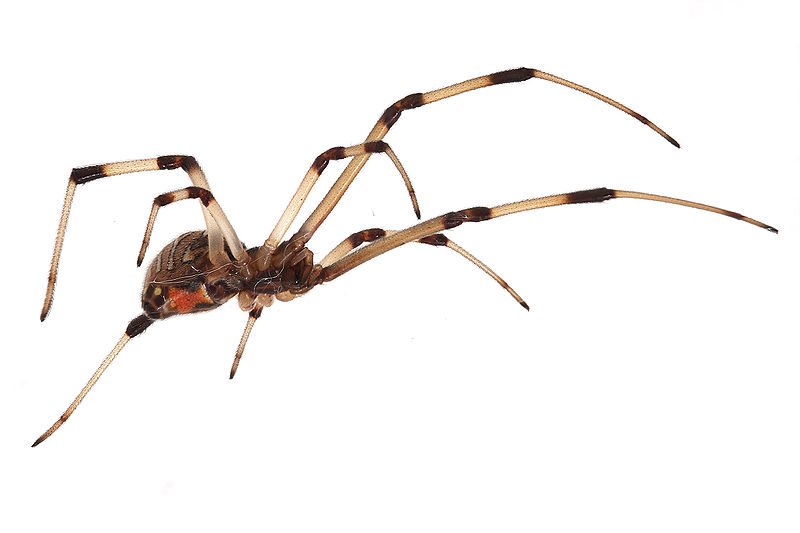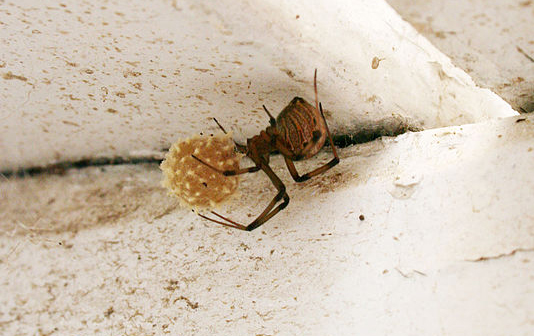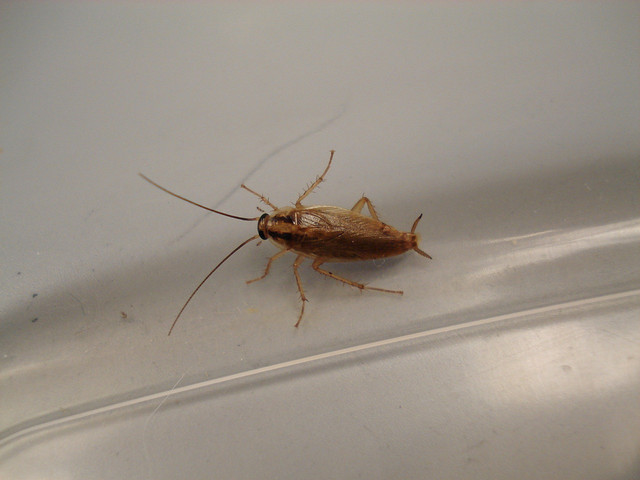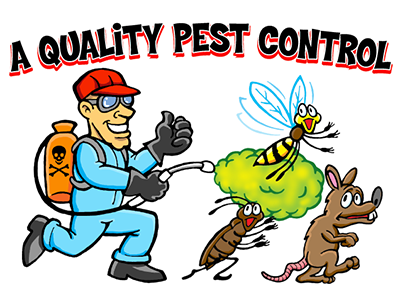Resource Center
Learn to Identify and Increase an Awareness of These Pests
A Quality Pest Control Pest Identification Guide will help you learn more about the most common household pests that can threaten your home.
Brown Widow
Latrodectus Geometricus)
- They became established in Southern California in early 2000.
- The first specimens were collected in Torrance in 2003 – They were found with greater frequency in Los Angeles, Orange, and San Diego counties.
- The color consists of a tan and brown with black accent marking.
- They have an orange shade hourglass on the bottom of their abdomens.
- The egg sac has multiple silk spikes projecting out from the surface.
- The female lays about 120 – 150 eggs per sac and produce 20 egg sacs over a lifetime.
- They build their webs in secluded and protected sites around homes, businesses, and in woody vegetation.
- The bite from this particular spider is not as severe compared to the Black Widow bite – A Brown Widow does not have the capability to inject as much venom compared to a Black Widow.
Human Health Concerns
- The two major symptoms – 1) Pain from a bite. 2) A bite leaves a red mark.
- A small percent of humans require hospitalization.
- It is always an excellent idea to follow up with a licensed medical professional to evaluate your injury from a Brown Widow.



German Cockroach
(Blattela Germanica)
- They have the capability to grow a population over 100,000 roaches in a year period of time.
- The color is brown with two dark streaks on the thorax.
- They are ½ inch in length.
- They have an incomplete life cycle (egg, nymph, and adult).
- The female produces 4 – 8 egg capsules in a lifetime containing 30 – 40 eggs each.
- The eggs hatch within 3 – 4 weeks.
- The adults may live up to one year.
- They are nocturnal in habit – Their primary activity at night is to forage for food that humans consume.
- They prefer to hide in dark places (cracks, crevices, and voids) during the day.
Human Health Concerns
- They can spread Dysentery, Typhoid, Gastroenteritis, Poliomyelitis (Polio), Leprosy, and Tuberculosis (TB).
Roof Rat
(Rattus Rattus)
- They are nocturnal foragers for the most part.
- They are black to slate colored on both back and belly.
- The length (tip of the nose to the end of the tail) ranges from 13 ¾ “ to 17 ¾ “.
- The tail is longer than the length of the head and the body combined.
- The litter size ranges from 4 to 10 young.
- Their sense of smell is very well developed.
- Their incisor teeth are very effective gnawing and cutting tools – They have the capability to gnaw through lead pipes, fresh concrete, soft and semi-hardened aluminum and other types of hard materials.
- They depend on their sense of smell and their gnawing tools to get to a food source.
Human Health Concerns
- They can spread Murine Typhus, Rat-Bite Fever (RBF), Salmonella Enterica Serovar Typhimurium, Leptospirosis, and Eosinophilic Meningitis.


Green And Blue Bottle Flies
(Calliphora)
- They are commonly referred to as “blow flies”.
- They are metallic blue or green sheen in color.
- The cause of their infestation is due to exposed garbage and/or dead animals (especially rodents).
- They are attracted to methane gas – This gas is given off by decaying animals and it is used as a fuel source for natural gas furnaces, stoves, and water heaters.
- They are highly active and fly around in a noisy fashion.
- The females lay up to 600 eggs during their two to three weeks of their lifetime.
Human Health Concerns
- They can spread Tuberculosis, Parasitic Worms, Yaws, Trachome, and Cholera.
